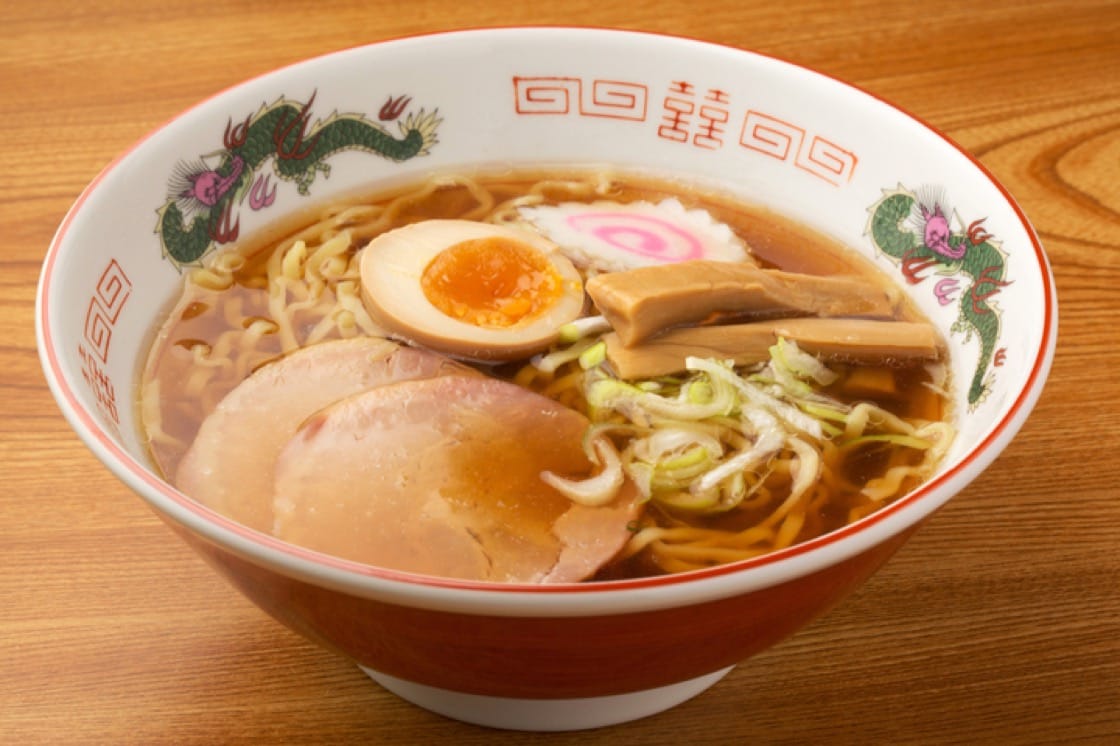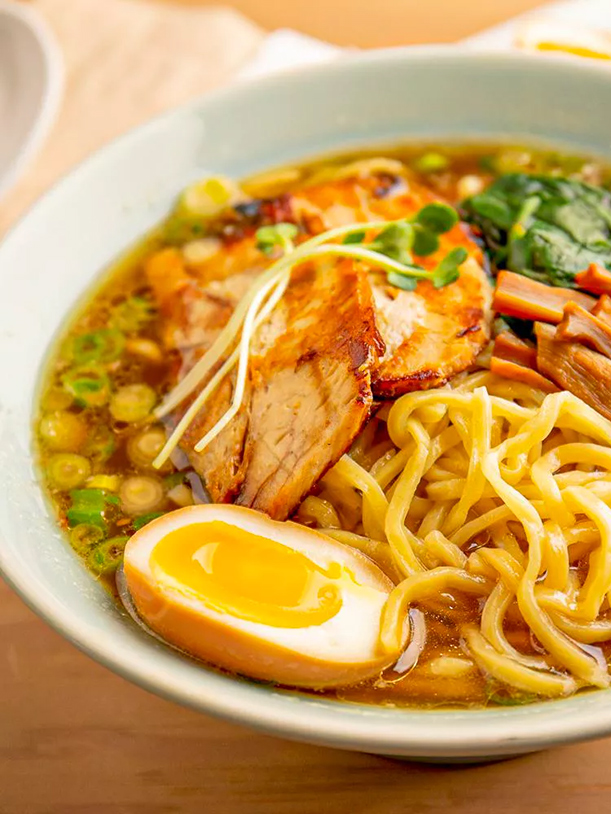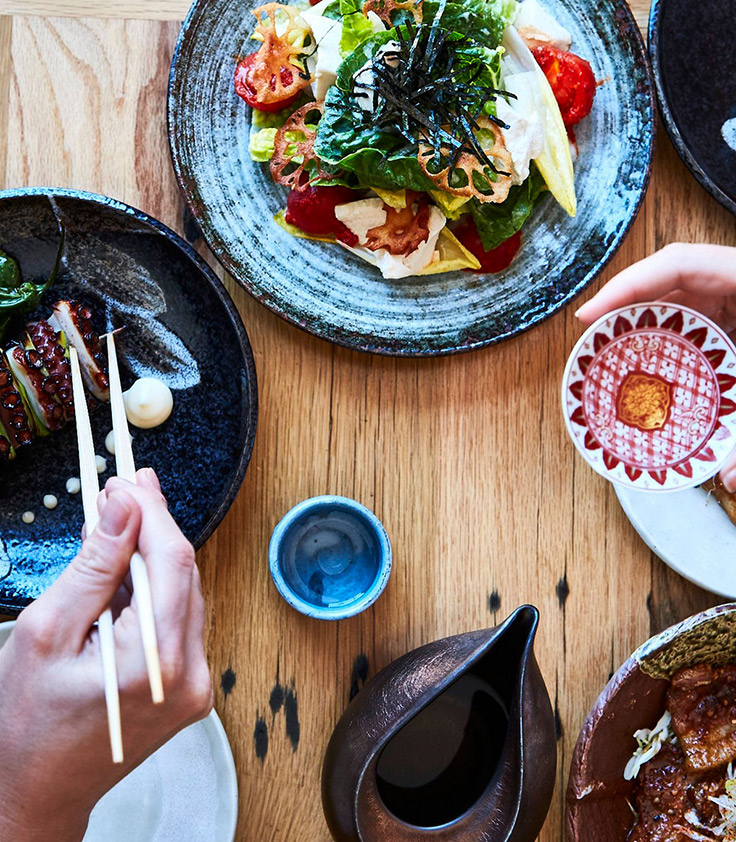When ladles of piping hot broth meet silky al dente noodles, magic truly happens. Ramen has that intoxicating allure when it arrives at your table still steaming, beckoning a first giant slurp.
Served in more than 24,000 restaurants throughout the country of Japan, ramen is increasingly revered for its culinary complexity, from the depth of flavor in the broth to the perfect bite of the noodles. What was once a laborer's supper has transformed into a culinary embodiment of the Japanese quest for perfection. And in December of 2015, Tsuta, a humble backstreet ramen restaurant in Tokyo’s Sugamo district, received a Michelin star. Here are 10 different types or ramen from Japan to know about:

Sapporo
Region: Hokkaido
Here’s why this style of ramen is so iconic: the hearty Sapporo ramen was specifically designed for the residents of Hokkaido who are annually subjected to the region’s harsh, snowy winters. While the rich, salty flavors that come with a miso base, knob of butter and seasonal seafood are delicious, too much of a good thing can spell trouble. The generous heap of sweet corn spooned over top offers a good balance.
Hakodate
Region: Hokkaido
Also hailing from the Hokkaido region is the the unassuming Hakodate ramen. Unlike its more showy cousin, this style is a light, clear shio (salt) broth that bathes thin noodles and a smattering of toppings like preserved bamboo shoots, slices of pork and a handful of spring onions. The Hakodate’s magic is in its restraint and the broth—while demure-looking—bursts with flavor.
Asahikawa
Region: Hokkaido
Bookending the trilogy of Hokkaido’s finest ramens is Asahikawa’s shoyu (soy) ramen. With Sapporo’s miso ramen, Hakodate’s shio and now Asahikawa’s shoyu, a single trip to Hokkaido will guarantee the opportunity for you to try three of the most popular ramen styles. Like Sapporo’s, Asahikawa’s ramen was designed with the cold in mind. (Think -22˚F.) The end result is a thin film of flavored oil coating the surface of the ramen to trap the heat in.

Kitakata
Region: Fukushima
On the lighter side, the Kitakata ramen features a gentle, clear, soy-based broth flavored with pork bones and niboshi (dried sardines). It’s noodles—thick and slightly curly thanks to its maturation process—are also a distinctive feature of the dish.

Hakata
Region: Fukuoka
You might know the ubiquitous rich, milky colored broth as tonkotsu ramen, but it’s more accurately known as the Hakata ramen. Tonkotsu simply translates to "pork bone" and represents the technique of boiling pork bones down for eight hours until the broth turns a milky white and is lusciously suffused with the flavors of pork. Noodles are typically thin and hard so that they do not overcook and disintegrate into the soup.

Tokyo
Region: Tokyo
For a long time, the Tokyo ramen was the country’s definition of the standard ramen bowl. It’s clean flavors of seafood and chicken gives us an indication of the Tokyo ramen’s humble beginnings, which is likely to be soba served in a simple dashi soup for laborers. Today, the dashi is simmered with chicken stock and shoyu, giving the Tokyo ramen its signature dark toffee color.

Tsukemen
Region: Tokyo
A fairly new entrant to the ramen hall of fame is tsukemen, a dish where the noodles and soup are served separately. The term "soup" should be used with caution, considering its viscosity and heavy-handed seasoning. The idea of tsukemen is to dip cold noodles—like soba or udon—in a thick, flavorful sauce. A dashi is often served with tsukemen for the guest to gradually dilute the intensity of the sauce so that it may eventually be drunk as a soup at the end of the meal.
Chuka Soba
Region: Wakayama
Generally overshadowed by its neighboring city Osaka, Wakayama hasn’t had much time in the limelight until a popular Japanese TV show spotlighted a humble ramen shop, Ide Shoten, and its Wakayama ramen—a thick tonkotsu-shoyu broth with thin noodles that is the best in the country. Ramen enthusiasts started flocking to Wakayama with haste. While we may know it as Wakayama ramen, the locals call it chuka soba—not ramen—which translates to “Chinese noodles.”

Takayama
Region: Kyoto
Unlike the aforementioned ramen styles with broths flavored with tonkotsu or niboshi, Takayama ramen primarily makes use of chicken bones, bonito flakes and vegetables. Ramen broth is typically made by placing the base, also know as kaeshi, in a bowl and dissolving it with the hot soup. Takayama ramen, on the other hand, boils its kaeshi together with its base, resulting in a dark and yet clear shoyu broth with a mild sweetness.
Onomichi
Region: Hiroshima
Four words: chunks of melted lard. That’s what you find bloating on top of the Onomichi ramen. Another distinctive feature of this style is the silky, flat homemade noodles as well as a hot shoyu broth. Similar to the Asahikawa ramen, the Onomichi ramen comes with a layer of hot oil. So just because your noodles don’t seem to be letting off any steam, it doesn’t mean it’s not warm enough to dive in. You have been warned.





















